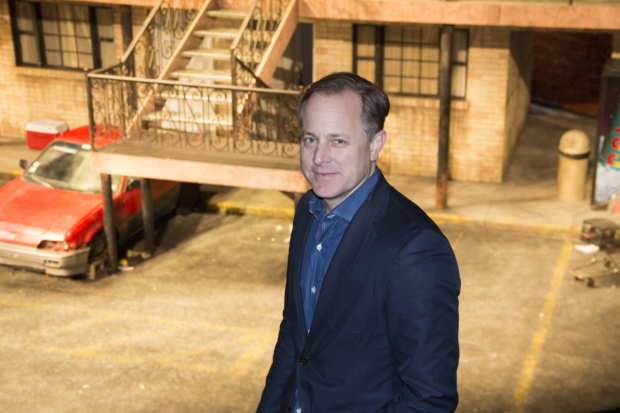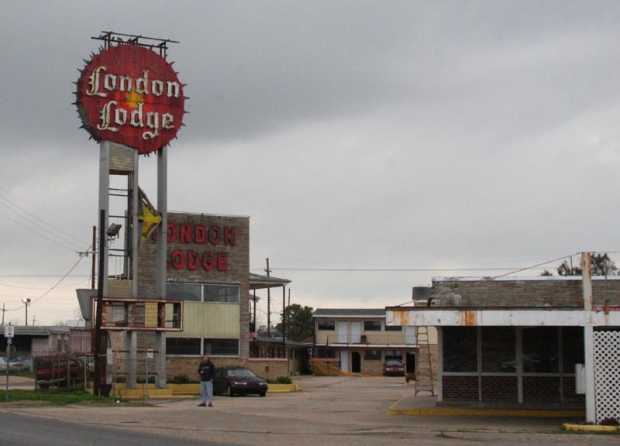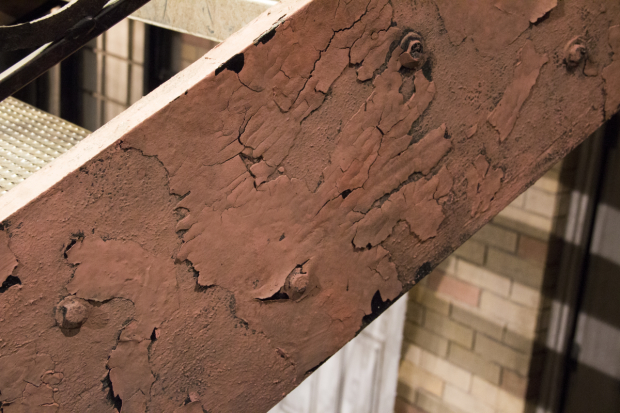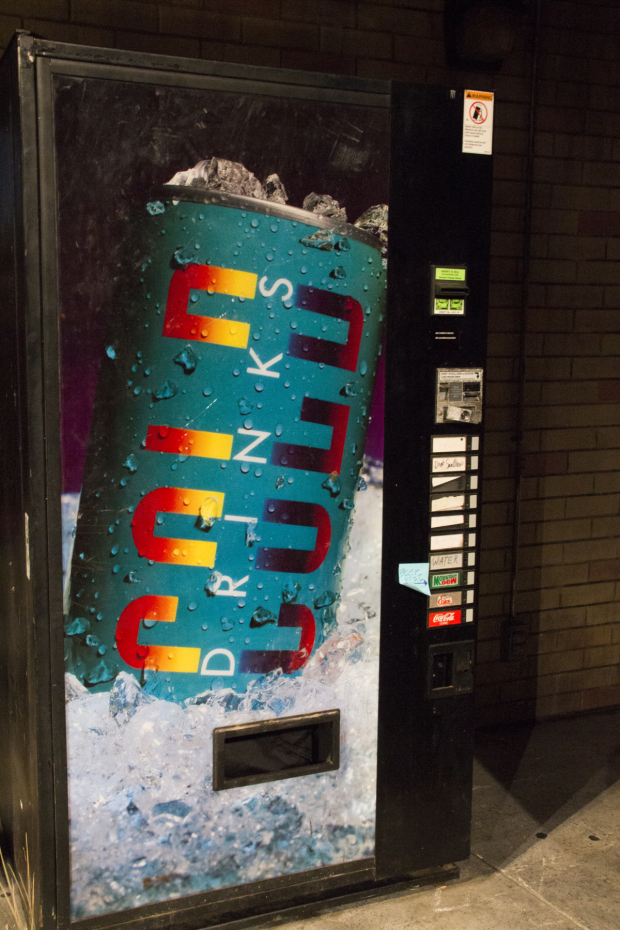Checking In at the Hummingbird Motel, the Setting of Broadway's Airline Highway
Scenic designer Scott Pask takes us on a set tour of his latest creation, a two-story motor lodge.

(© David Gordon)
Upon their first glimpse of the Hummingbird Motel, audiences will likely forget they're in Manhattan Theatre Club's Samuel J. Friedman Theatre. They might even forget they're in New York City. That's how realistic Scott Pask's set is for Lisa d'Amour's new Broadway drama Airline Highway. It looks like Pask and his team put an entire two-story side-of-the-road motel on the flatbed of a truck and motored it to Times Square.
"It's very close [to scale]," says Pask. "I've nipped and tucked a little bit. Things are just a little bit shorter, ceiling-wise, but not noticeable to anybody. The door heights are general door heights. There are tiny little adjustments I made throughout so it wouldn't seem so overwhelming. All of the details are based in reality. The space itself has to have an authenticity in order for the characters to be authentic.
Airline Highway, which opened on Broadway April 23 after a 2014 run at Steppenwolf Theatre in Chicago, is the story of a group of societal castaways — strippers, hookers, junkies, and drag queens — who cohabit on the outskirts of New Orleans at the aforementioned motel, a place of former glory that has now, like its tenants, fallen on hard times. On the day the play is set, amid New Orleans' annual Jazz Fest, the characters are gathering to hold a living funeral for one of their own, legendary burlesque dancer Miss Ruby, whose life is coming to an end.

(photo via www.builtstlouis.net)
"This particular script is very specific about where it's located," notes Pask. "[The Hummingbird] is one of those typical two-story motor lodges, inspired by a motel called the London Lodge, right outside New Orleans. It did have this time of glory in the 1950s, and it had a former patina. Now, it's got this pallor as opposed to sheen."
Logistically, there were several unique challenges posed by the script and production. First, the set would have to be built for Steppenwolf, and then downsized for the Friedman stage, which is somewhat smaller. Next, "The script demands a lot of visible playing spaces," says Pask. "In particular, rooms that are visibly defined by certain characters and organized in such a way that this person is next to this person, and the office is there, and there's an upstairs bathroom [on top of that]. But it's great to think about how we can make this an amphitheater of sorts, to serve as the background for the big event, which happens in Act Two."
There's more to Pask's scenic design than meets the eye, as he showed TheaterMania during a recent tour of his creation. He pointed out five details that the actors see every night — but the audience might not catch amid the furor of D'Amour's play.

If you look closely enough, you can see paint chipping on the wood surfaces along the building. "The painters at Steppenwolf did all of this, with such a level of detail. Scenic painting is about building up layers," notes Pask. "There's a base layer of paint to give it texture, and then another layer of paint on top of that." It's about three or four layers, at least. "And then it reacts to a certain alcohol-like content to start cracking on itself."

"We combed Craigslist trying to find the most anonymous drinks machine," says Pask of this standard yet incredibly dated-looking vending machine, which sits in a prominent position onstage. They looked for one with a "colorful sign," that could be relit after the machine was completely gutted. Perhaps the smallest detail, which would be completely invisible to those even in the front row, is the Post-it note that tells consumers beer is available if you hit the Mountain Dew button.

"I like the curated garbage," Pask says of the trash debris scattered around the stage. "There's a rag that I'm fond of that I picked up on the street in Chicago. I did go foraging for things. I like dense details like that."

"This is a 1983 Honda CRX," notes Pask. "It has nips and tucks, as well. At Steppenwolf, it was in its full glory. Here, it's very hard to tell, but we did a bit of an adjustment for space. We took an amount of space out of the center of the car to compress it." The wheels of the car are on blocks.

Is the building made out of the same materials as an actual two-story motel? "The upper level, for sure, is all wood planking. The lower level is a fabricated brick, as opposed to masonry, just for weight and expanse." The beams holding up the "Hummingbird Motel" sign is steel, but it's not cased in "full concrete. I don't think the stage would hold that up."

(© Joan Marcus)








